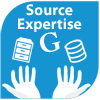 Jinfo Reviews Web of Science - Curated Research Content
Jinfo Reviews Web of Science - Curated Research Content
Jinfo Blog
22nd April 2016
Abstract
In our in-depth product review of Web of Science, we look at how this citation index database for researchers in science, social science, arts and humanities has evolved and how they can make best use of its 1 billion cited references.
Item
 Carrying out in-depth research in academic and multidisciplinary scientific fields can be a time-consuming process. So we were interested to review Web of Science from Thomson Reuters, claiming to be "the world's leading source of scholarly research data" and offering access to over 1 billion cited references from over 200 million different source items.
Carrying out in-depth research in academic and multidisciplinary scientific fields can be a time-consuming process. So we were interested to review Web of Science from Thomson Reuters, claiming to be "the world's leading source of scholarly research data" and offering access to over 1 billion cited references from over 200 million different source items.
Our Product Review of Web of Science is now online.
We were particularly keen to test out areas of the citation index database such as:
- Depth of the backfiles
- Standards used to evaluate, select and curate content
- Subject-specific and regional research
- Identification of emerging trends.
Reviewer Sophie Alexander put Web of Science through a thorough analysis and testing process, noting that there have been a number of enhancements and additions since we last reviewed it in 2009, including the addition of two notable citation indexes: Emerging Sources Citation Index (ESCI) and Russian Sciences Citation Index.
Discover Curated Research Sources
Web of Science is used by researchers as a discovery tool, to track and research citations across time or content types, and to identify collaborators with influence. They could also use it to see who is being cited or to obtain citation statistics to use to support grant and funding applications.
Sophie explains, "It allows you to search across data, books, journals and patents from a single platform, helping you to find, analyse and share the most relevant information in science, social science, arts and humanities."
Customers in (mainly) scholarly institutions from Europe to China, North America and Russia use Web of Science and emerging markets are a growth area.
Find Out More
For the full review, including information on the differences between Web of Science and competitors Scopus and Google Scholar, read the full Product Review of Web of Science.
- Blog post title: Jinfo Reviews Web of Science - Curated Research Content
- Link to this page
- View printable version
- Product Review of Zotero (Introduction; Key Advantages; Contact Details)
Monday, 21st March 2016 - Product Review of RefME (Introduction; Value; Contact Details)
Wednesday, 30th September 2015
- Product Review of Web of Science
Tuesday, 12th April 2016 - FreePint Report: Product Review of Scopus
Tuesday, 24th July 2012
Register for our next Community session:

Transforming knowledge management at BASF – GenAI and the evolution of QKnows
10th December 2025
Latest on our YouTube channel:
Read on the Blog:
December 2025 update
3rd December 2025
- Jinfo wins CILIP’s inaugural “McFarlane & Ward Information Management” award
4th December 2025 - December 2025 update
3rd December 2025 - Review of Matchplat – combining AI with traditional industry code searching
27th November 2025
- Team roles and AI (Community) 26th February 2026
- Team demand and AI (Community) 22nd January 2026
- Transforming knowledge management at BASF – GenAI and the evolution of QKnows (Community) 10th December 2025